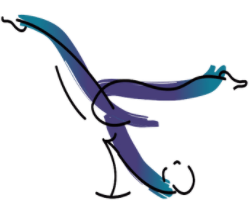Dealing with Eye Strain and Headaches from Too Much Screen Time? How Pilates Can Help
Experienced eye strain and headaches lately? You might be using gadgets too much. Excess screen time is especially common now that we increasingly use technology for work, school, and leisure, and it’s pretty standard for people to look at digital devices for more than seven hours a day.
Unfortunately, this phenomenon is making computer vision syndrome (CVS) more prevalent. The American Optometric Association defines this condition as a group of visual disturbances—including blurred vision, dry eyes, and eye fatigue—caused by the prolonged use of video display terminals like smartphones, tablets, and computers. It also covers non-ocular issues like headaches, neck pain, and back pain. More than 65% of American adults experience CVS.
If you have CVS and are trying in vain to ease its symptoms, don’t worry—there are plenty of ways to boost the effects of the treatments usually leveraged to address this condition. Among the most notable is Pilates. Here’s more on the traditional methods used to ease CVS—and how Pilates can support them.
Tried-and-true CVS treatments
Traditional methods for easing CVS symptoms focus on the two main disturbances it causes: ocular and non-ocular. Chief among them is the use of eyewear designed to directly treat eye strain. In particular, you can buy glasses that come with specialized blue-violet light lenses. As seen on Glasses.com, these are available for both prescription and non-prescription glasses and aim to cut your exposure to the blue-violet light emitted by digital screens. The wavelengths responsible for this light can induce eye strain, so leveraging these glasses can effectively enhance visual comfort and ease ocular CVS symptoms.
Another tried-and-true CVS treatment involves improving your posture, which shares a close connection with eye health. Your eyes send visual information to your brain, which then sends signals down your spine to tell the rest of your body how to react to that information. Poor posture can negatively impact how quickly your spine sends those signals, causing adverse health effects like blurred vision and worsened blood circulation. In turn, poor eyesight caused by bad posture can tighten the muscles, leading to headaches, neck pain, and back pain. As such, non-ocular symptoms can be treated with chairs that promote better posture using ergonomic design principles. As exemplified by the offerings on West Elm’s online catalog, the chairs from its Branch collection use eight points of adjustment to support your lower back, neck, and spine in all the right places. That support can help relieve the aches and pains caused by CVS.
How Pilates can help ease CVS
As a total body workout, Pilates offers a number of health benefits. However, its ability to promote good posture is what helps it bolster the treatments aimed at easing both the ocular and non-ocular symptoms of CVS. Even if you use an ergonomic chair to support your spine, for example, you can’t reap the benefits that support provides if you don’t maintain good posture when you’re not using that particular piece of furniture. Pilates can effectively help you build the habit of keeping a straight back. Its various routines prioritize building deep abdominal strength,
helping add support around your spine. Over time, that can help you improve your posture and relieve physical CVS symptoms that involve musculoskeletal pain—including neck pain, back pain, and tension headaches. You can even try dedicated training sessions to address those issues here at Absolute Pilates.
By further improving your posture, Pilates goes on to ease eye strain. This visual disturbance occurs when the eyes are forced to look at one thing for prolonged periods, such as what happens with excess screen time. Doing so essentially locks the eye muscles in one position for longer, leading to the strain and fatigue associated with CVS. Pilates can help precisely because it supports good posture—something that we note can ultimately improve your blood circulation. That can give your eyes a steadier supply of oxygen, which can then infuse your eye muscles with more nutrients, strengthen them, and ease eye strain. Combined with the reduced exposure to blue-violet light offered by the right glasses, you can significantly cut down on the fatigue you feel when using digital devices.
Plenty of Americans experience CVS. If you're one of them, you can use Pilates to boost the effects of blue-violet light glasses and ergonomic chairs to ease its symptoms.
Want more posts like this? Keep reading about the intersection of Pilates, health, and well-being here on the Absolute Pilates website.
Article written by Tracey Craig
Exclusively for absolutepilates.co


